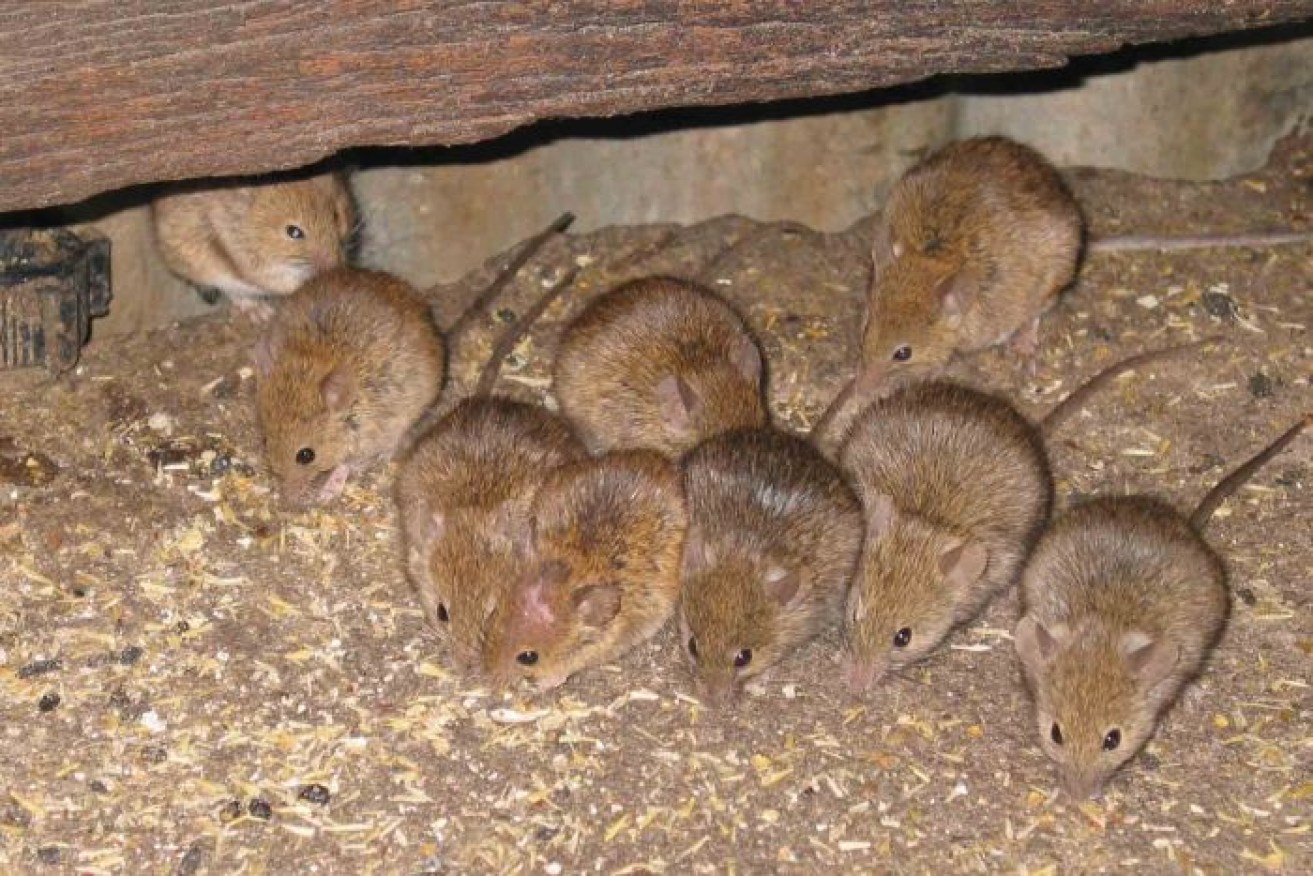Cannibal mice eat each other as grain harvest ends

A lack of food is leaving mice no choice but to eat each other. Photo: CSIRO
Reports of mice reverting to cannibalism are signifying the end of high mice populations in farming areas across southern Australia.
A number of farmers in the Riverland and Mallee regions have reported witnessing the cannibalistic behaviour.
Ian Farley, of Jabuk on the Mallee Highway, said mice cannibalism was common on farms.
“I saw three mice in the hay shed and they had been half eaten,” he said.
Mr Farley said he considered the behaviour cause for celebration because it signified the end of a mice plague.
Last year he spent more then $3000 re-sowing paddocks because they were repeatedly eaten by the feral rodents, and said other growers had spent a lot more than him.
Joe Gilbertson, also a Mallee farmer, noticed mice on his farm looking sickly.
“[The mice] didn’t have as much bounce in their step and were looking a bit hunched up,” he said.
Despite this, Mr Gilbertson is cautious to predict whether mice populations would continue to decrease.
Lameroo grain grower Gary Flohr had also witnessed half-eaten mice on his property, which he attributed to the end of the harvest period when little grain was available for the pests to eat.
“The mice are getting a bit hungry and the grain has finished, so the mice start to cannibalise each other,” Mr Flohr said.
Animals don’t have human values
CSIRO researcher Steve Henry explained cannibalistic mice was a common phenomenon associated with mice outbreaks.
Two months ago, it was reported that mice were breeding in plague proportions and causing havoc on properties in regional areas.
Mr Henry said it happened when there was no food source and the mice became diseased.
“What generally happens at the end of a major outbreak, is farmers report they see mice starting to eat each other and then the mice disappear almost overnight.”
Mr Henry said eating their own kind did not make the mice sick, just like humans could eat human flesh without getting ill.
Understanding cannibalism as morally and ethically wrong was a social construct, Mr Henry said, and animals did not make the same sort of value judgments that people did.
“Lots of animals will indulge in this sort of thing because they don’t place values on things the same way humans do.
“We deem this to be unacceptable behaviour, whereas animals see this as a resource that should be used to ensure their survival.”
“We apply human values to animals and we do this with dogs all the time. We associate behaviours to things we can understand and things we would do.
“Really what’s driving those behaviours is a whole lot of other factors.”
Mr Henry said the CSIRO was getting many reports of mouse numbers starting to decline and he recommended farmers bait them when sowing new crops.
But he said he was reluctant to say for certain that the numbers would not increase again.








